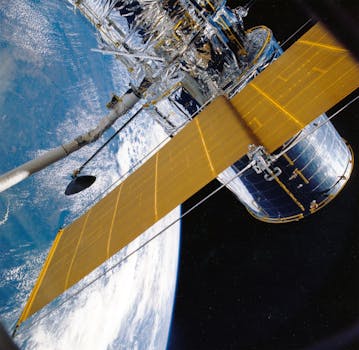The Future is Now: Exploring the Cutting-Edge Innovations in Satellite Telecommunications

The Future is Now: Exploring the Cutting-Edge Innovations in Satellite Telecommunications
The Future of Satellite Telecommunications is now, and it’s an exciting time for the industry. With the increasing demand for global connectivity, satellite telecommunications is playing a vital role in bridging the gap between different parts of the world. The latest innovations in satellite telecommunications are transforming the way we communicate, making it faster, more reliable, and more accessible than ever before.
Satellite telecommunications has come a long way since its inception. From the early days of satellite communications to the current era of high-throughput satellites, the industry has witnessed tremendous growth and innovation. Today, satellite telecommunications is used in a variety of applications, including broadband internet, mobile communications, navigation, and earth observation.
Advancements in Satellite Technology
One of the key drivers of innovation in satellite telecommunications is the advancement in satellite technology. The development of high-throughput satellites, such as those using Ka-band and Q/V-band frequencies, has enabled faster data transfer rates and higher bandwidth. This has led to the widespread adoption of satellite broadband internet, which is now used by millions of people around the world.
Another area of innovation is in the development of smaller, more efficient satellites. The use of small satellites, such as CubeSats and nanosats, is becoming increasingly popular due to their lower cost and increased maneuverability. These small satellites are being used for a variety of applications, including earth observation, communication, and navigation.
5G and Satellite Telecommunications
The rollout of 5G networks is also having a significant impact on the satellite telecommunications industry. The use of 5G in satellite telecommunications is enabling faster data transfer rates, lower latency, and greater connectivity. This is particularly important for applications such as real-time video transmission, online gaming, and virtual reality.
Satellite telecommunications is also playing a critical role in the development of the Internet of Things (IoT). The use of satellites to connect IoT devices is enabling a wide range of applications, including smart cities, industrial automation, and environmental monitoring.
Challenges and Opportunities
Despite the many innovations and advancements in satellite telecommunications, there are still several challenges that need to be addressed. One of the major challenges is the issue of space debris, which is becoming increasingly problematic as more satellites are launched into space.
Another challenge is the need for greater investment in satellite infrastructure. The development of new satellite constellations and the launch of new satellites require significant investment, which can be a barrier to entry for new companies and countries.
However, these challenges also present opportunities for innovation and growth. The development of new technologies, such as satellite-based solar power and advanced propulsion systems, is enabling the creation of more sustainable and efficient satellite systems.
In conclusion, the future of satellite telecommunications is exciting and full of possibilities. With the latest innovations and advancements in technology, satellite telecommunications is becoming faster, more reliable, and more accessible than ever before. As the industry continues to evolve and grow, we can expect to see even more innovative applications and use cases for satellite telecommunications.




